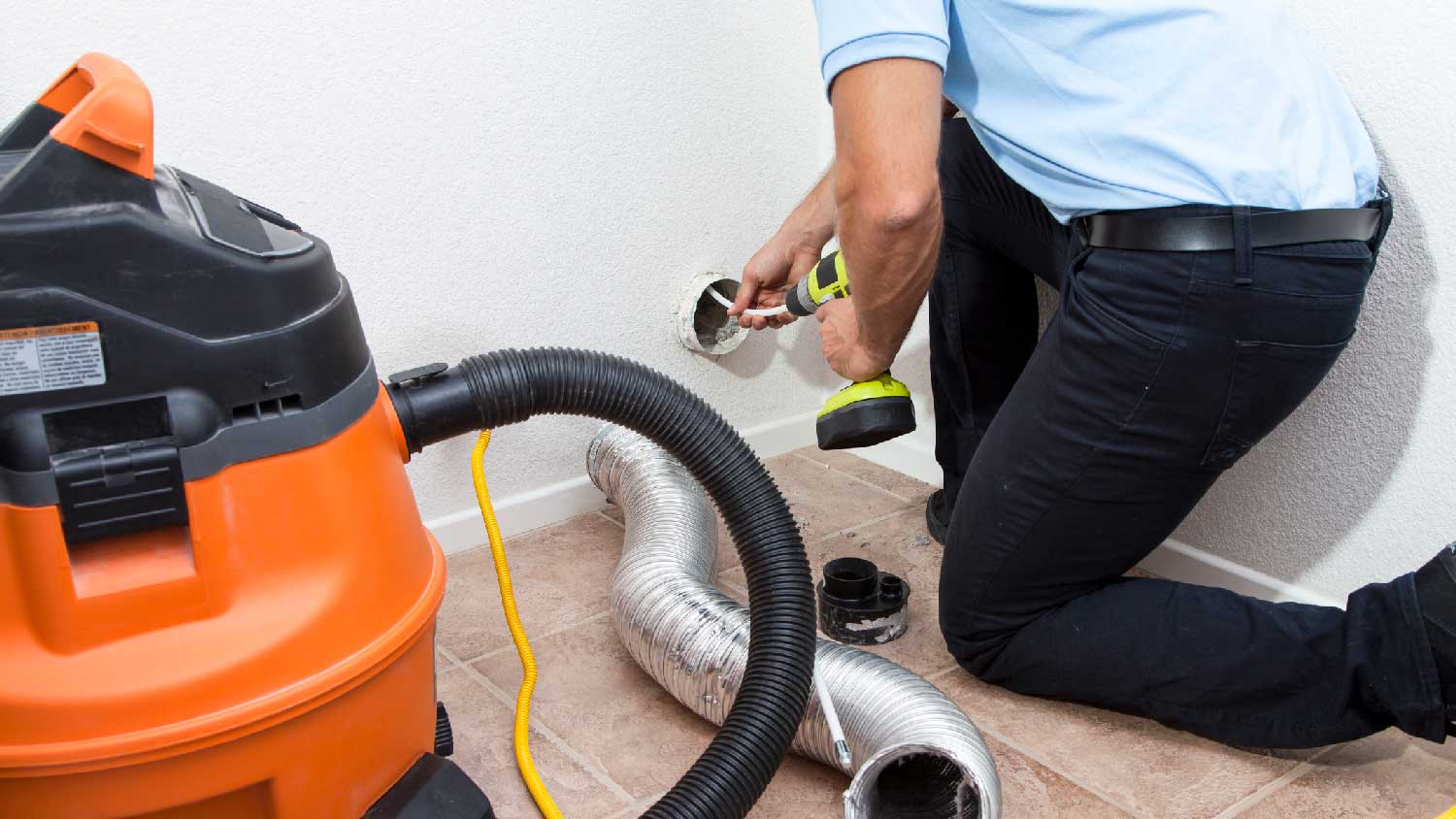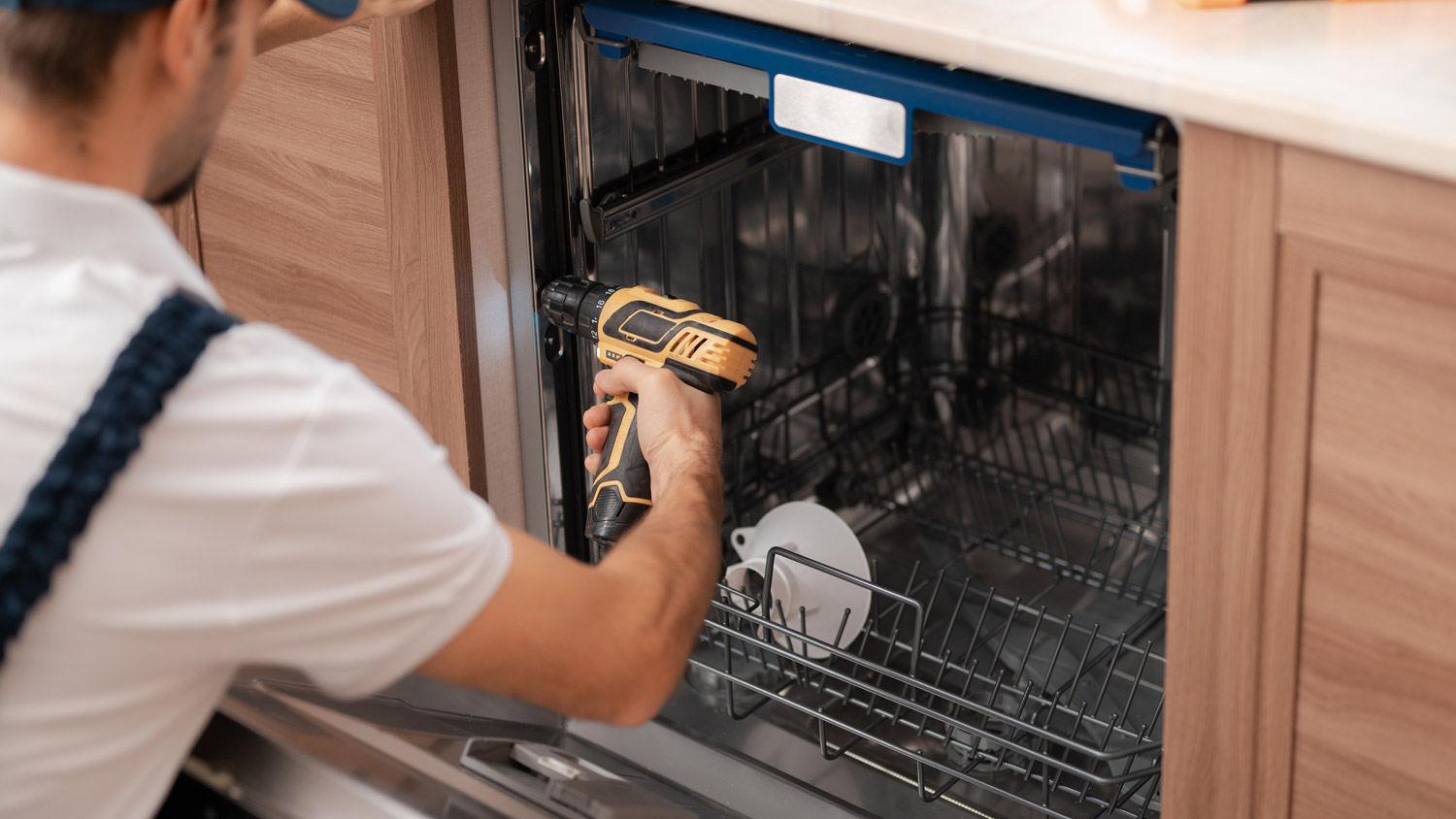
If your refrigerator has been damaged, refrigerator door dent repair cost will vary based on the imperfection's size, depth, and location. Use our guide to estimate how much you'll spend on refrigerator dent repair.
Everybody needs to vent, including your dryer


Dryer vents filter out steam from wet clothes.
Aluminum foil and semi-rigid metal vents are the least expensive options.
Rigid and periscope ducts are the most effective types.
Damp clothes or strange odors are signs you should replace your dryer vent.
Soft, warm towels and quickly dried clothes—these are a few of our favorite things. Your home's dryer is essential to keep your laundry pipeline moving. But without a dryer vent, your machine won't work as it should, leading to damp garments.
But what is a dryer vent exactly, and how does it function? This guide explains everything you need to know about dryer vents so you can choose the right style and know when yours needs replacing.
A dryer vent is a tube that runs from your clothes dryer to either the outside of your home or into a water filtration system. It acts as an exhaust pipe funneling out the moisture from the dryer and prevents the machine from overheating.
Venting the dryer's steam outside of the machine helps prevent mold or mildew from developing and reduces the risk of fire.
Outdoor dryer vents are the only option for gas-powered dryers because they emit carbon monoxide, which can be lethal if released inside a home. If you have an electrically powered machine or are considering getting one, an indoor dryer vent is a viable alternative.
An indoor dryer vent captures the steam in a water filtration system—rather than releasing it into the air—which you'll have to manually empty at the end of every dryer cycle.
Dryer vents come in five different materials and designs. Here’s how each option differs.
These dryer vents have a flexible, accordion-like structure and are affordable and easy to install yourself. However, they contain many ridges that are more likely to trap lint and lead to unwanted buildups than other venting options. The soft material is also prone to getting crushed whenever the machine is moved, which can interfere with its efficacy.
This style is made from a combination of both aluminum foil and pure aluminum. As a result, it looks similar to aluminum foil dryer vents but has greater durability. For instance, it’s less likely to get squashed if your dryer shifts during a cycle.
This option is made from either galvanized steel or aluminum and is considered among the best picks for dryer vents because its smooth interior keeps lint buildup at bay—and thanks to the strong material, it won’t bend or fold. You’ll pay slightly more for this style, but you’ll spend less in the long run on repairs and replacements.
While technically an option, plastic and vinyl dryer vents aren’t recommended—and, in many cases, are banned by building codes—because they catch lint at a higher rate than any other option and are the most prone to melting or causing a fire.
Also called a slim duct, this type of dryer vent connects to the continued venting within your walls and allows your machine to be flush against the wall, so it takes up less space overall. Plus, because it’s made of rigid metal, it's smooth inside and won’t catch lint quite as quickly as some alternatives.

You can take a handful of steps to ensure that your dryer vent is in tip-top shape.
Even the best dryer vents need to be cared for semi-regularly. So how often should you clean a dryer vent? Plan to do this task every three to six months or hire a professional who cleans dryer vents. Models like aluminum foil and semi-rigid vents will need more frequent attention than sturdier alternatives like rigid metal and slim ducts.
A blocked or dirty dryer vent can pose a fire hazard to your home. When lint accumulates in the vent, the heat from your dryer could cause the lint to combust, triggering a spark that can start a fire. That’s why having your dryer vent professionally cleaned every year is so important.
Learning how to clean a dryer vent is easy to do. Start by turning off the gas and electricity, then detach the vent from your machine. Use a vacuum with a hose attachment to suck out the lint. If any debris remains, attach a microfiber cloth to a wire brush and wipe it throughout the interior of your vent.
If it’s taking far longer than it should for your clothes to dry or you notice a lot of lint, it may be time to replace your dryer vent. Strange smells while the dryer is running are another sign that you need a new vent. On average, a local dryer repair specialist can replace the vent for $200.
From average costs to expert advice, get all the answers you need to get your job done.

If your refrigerator has been damaged, refrigerator door dent repair cost will vary based on the imperfection's size, depth, and location. Use our guide to estimate how much you'll spend on refrigerator dent repair.

Discover the cost to install washer and dryer hookups. Learn about price factors, labor, materials, and tips to save on your laundry room project.

Discover the average dishwasher installation cost, key price factors, and tips to save on your project. Get transparent, expert-backed estimates.

Learning how to determine washer box height in your laundry room will come in handy when you need to access your washer connections.

If you’re interested in alternative heating options, you need to see our pellet stove pros and cons. Get the right heater for your home.

Is food going bad too quickly? Is your refrigerator making strange noises? This guide will help you determine whether it’s time for a repair technician or a new refrigerator.